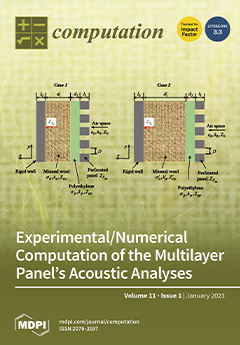In the Compressed Sensing (CS) framework, the underdetermined system of linear equation (USLE) can have infinitely many possible solutions. However, we intend to find the sparsest possible solution, which is
-norm minimization. However, finding an
norm solution out of
[...] Read more.
In the Compressed Sensing (CS) framework, the underdetermined system of linear equation (USLE) can have infinitely many possible solutions. However, we intend to find the sparsest possible solution, which is
-norm minimization. However, finding an
norm solution out of infinitely many possible solutions is NP-hard problem that becomes non-convex optimization problem. It has been a practically proven fact that
norm penalty can be adequately estimated by
norm, which recasts a non-convex minimization problem to a convex problem. However,
norm non-differentiable and gradient-based minimization algorithms are not applicable, due to this very reason there is a need to approximate
norm by its smooth approximation. Iterative shrinkage algorithms provide an efficient method to numerically minimize
-regularized least square optimization problem. These algorithms are required to induce sparsity in their solutions to meet the CS recovery requirement. In this research article, we have developed a novel recovery method that uses hyperbolic tangent function to recover undersampled signal/images in CS framework. In our work,
norm and soft thresholding are both approximated with the hyperbolic tangent functions. We have also proposed the criteria to tune optimization parameters to get optimal results. The error bounds for the proposed
norm approximation are evaluated. To evaluate performance of our proposed method, we have utilized a dataset comprised of 1-D sparse signal, compressively sampled MR image and cardiac cine MRI. The MRI is an important imaging modality for assessing cardiac vascular function. It provides the ejection fraction and cardiac output of the heart. However, this advantage comes at the cost of a slow acquisition process. Hence, it is essential to speed up the acquisition process to take the full benefits of cardiac cine MRI. Numerical results based on performance metrics, such as Structural Similarity (SSIM), Peak Signal to Noise Ratio (PSNR) and Root Mean Square Error (RMSE) show that the proposed tangent hyperbolic based CS recovery offers a much better performance as compared to the traditional Iterative Soft Thresholding (IST) recovery methods.
Full article





